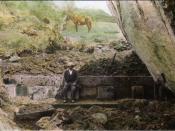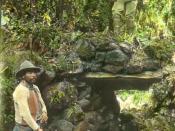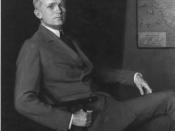At an elevation of 2,430m above sea level, and situated on a mountain ridge located above the Urubamba Valley in Peru, Machu Picchu or ÃÂThe Lost City of the IncaÃÂsÃÂ as it is more commonly known, lay abandoned for many years, remaining virtually untouched until itÃÂs official discovery in 1911. Lead by a group of locals who frequently visited the site, Machu Picchu was discovered by American archaeologist Hiram Bingham who subsequently began archaeological studies on it. While once thought to be a regular city, Machu Picchu, declared a UNESCO World Heritage Site in 1983, is now believed to have been a place for nobility to holiday in during the summer months. While comprising of around 200 buildings it is believed that in peak season there would be roughly 750 people residing in the country retreat, while in the monsoon season there may have only been a population of around 100 people (Morris 1998: The Ancient Cities of the Andes).
The findings and excavations made by Hiram Bingham in 1911 gave the archaeological community great insight into the Incan way of life, however, the theft and illegal exportation of artefacts, disrespect to indigenous people and failing to uphold a legal agreement outweighs the knowledge gained. This is evident through the facts that over 5,000 artefacts were removed from Peru with permission from the Peruvian government, and are still currently possessed by Yale University. Upon this, Bingham excavated and illegally smuggled an estimated 500 artefacts from Peru, and upon this Bingham privately purchased a further 1,500 artefacts that were never meant to leave the country from a Peruvian antiquities dealer (Matthews 2005: Peru prepares lawsuit against Yale University to get back Machu Picchu relics). These acts were clear examples of BinghamÃÂs unacceptable behaviour towards the Peruvian people and should never...



Quality essay
Could have used a little touch-up here and there, but over all was a very good essay that showed lots of signs of thorough research.
0 out of 1 people found this comment useful.